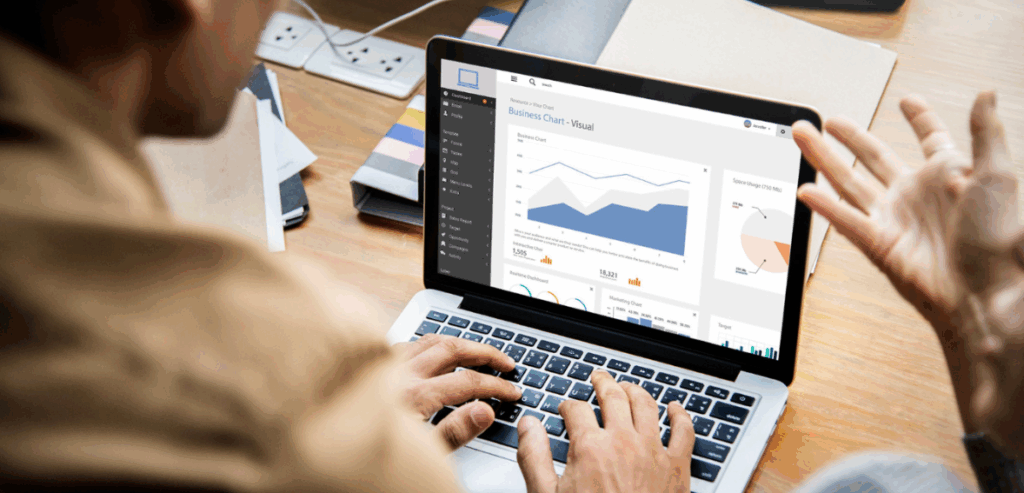Search engine optimization is not only about keywords, content, or speed but also about how your pages connect with one another and with the wider internet. The structure of these links is a major influence on how search engines understand and rank websites. Two of the most important strategies in this area are internal linking and external linking. While they often work hand in hand, each has a different role and impact. Achieving balance between the two is what leads to sustainable visibility and growth.
Internal linking SEO refers to creating pathways within your own website, guiding users from one page to another. This builds authority across your site and improves user experience. On the other hand, external backlinks are the connections that other websites create pointing toward your content, signaling relevance and credibility. Both strategies are strengthened by thoughtful site structure optimization, which ensures that links are purposeful and easy to navigate. In this article, we will explore the significance of both linking methods, their differences, and how businesses can strike the right balance for long-term success.
Understanding Internal Linking
Internal linking is the practice of connecting pages within your own site. These connections create pathways for both users and search engines, ensuring that important content is easily discoverable. From a navigation standpoint, strong internal linking SEO helps reduce bounce rates by encouraging visitors to explore more. From a technical standpoint, it distributes authority across pages, allowing newer or less popular content to gain visibility through association with high-performing pages.
When applied effectively, internal linking also supports site structure optimization. For example, a blog post linking to a service page not only informs the reader but also helps search engines understand the relationship between content categories. This method turns your website into a well-organized map rather than a collection of isolated pages. Internal links may not carry the same weight as external backlinks, but they are within your full control, making them an essential tool for shaping how both people and search engines experience your site.
The Role of External Linking
While internal links strengthen your website from the inside, external connections expand its influence outward. External backlinks occur when other sites link to yours, essentially casting a vote of confidence. Search engines see these links as signals of authority and credibility. If multiple reputable sites point to your content, it suggests that your information is trustworthy and worth ranking higher.
Building these links takes more effort because you cannot directly control who links to your site. However, you can create valuable content that naturally attracts attention. When combined with internal linking SEO, external strategies complete the cycle of authority building. They increase visibility beyond your own domain while signaling to search engines that your website plays an important role in the broader ecosystem. Without external support, even the most carefully executed site structure optimization can fall short because credibility also depends on how the internet at large views your content.
Benefits of Internal Linking for SEO
The immediate advantage of internal linking SEO is that it enhances navigation, but the deeper benefits are tied to search rankings. By connecting relevant pages, you allow search engines to crawl your site more effectively, ensuring that no important pages are left unnoticed. Link equity, or the distribution of authority, spreads across the site, boosting overall performance.
Strong internal linking also contributes to user engagement. Readers are more likely to stay longer when they are guided toward additional content that matches their interests. This behavior signals relevance to search engines. Furthermore, when internal linking is aligned with site structure optimization, it highlights pillar pages and creates topic clusters that reflect expertise. While external backlinks help build credibility outside your site, internal links strengthen authority within, making them a foundation of sustainable SEO growth.
Why External Links Drive Authority
Search engines measure authority by considering how many trusted websites endorse your content. External backlinks serve as this endorsement. Unlike internal links, which you control, external ones reflect genuine recognition by others in your industry. This makes them a powerful ranking factor. Sites with diverse, high-quality backlinks often dominate search results, regardless of how polished their internal setup might be.
However, external strategies must prioritize quality over quantity. A single link from a respected publication often outweighs dozens from unrelated or low-quality sources. Integrating external connections with strong internal linking SEO creates a balanced ecosystem. Search engines see not only that your website is well structured through site structure optimization but also that it is validated by peers. This combined approach elevates both trust and relevance, resulting in long-term visibility.
Common Mistakes with Internal Linking
While internal links are powerful, misuse can undermine their benefits. Overloading a page with excessive links dilutes value and confuses both users and search engines. Another common error is failing to update links when content changes or is removed, leading to broken pathways that frustrate readers. Poorly chosen anchor text also weakens internal linking SEO, as it provides little context to search engines.
Neglecting strategic site structure optimization often leads to flat or inconsistent hierarchies where important pages are buried deep without enough visibility. Although internal links are fully under your control, treating them as afterthoughts prevents them from reaching their full potential. Compared to external backlinks, internal ones may seem easier to manage, but they still require thoughtful planning to truly strengthen your overall SEO framework.
Pitfalls of External Linking Strategies
Acquiring external backlinks is one of the hardest parts of SEO, and it comes with risks if handled poorly. Buying links or participating in schemes may promise fast results but often lead to penalties that harm visibility. Similarly, chasing sheer volume without considering relevance can flood your site with low-quality endorsements that damage credibility.
Relying too heavily on external sources without supporting them with internal linking SEO is another pitfall. Even with many backlinks, weak site structure optimization leaves search engines confused about how authority should be distributed internally. Businesses need to focus on building genuine relationships, publishing link-worthy content, and letting backlinks grow naturally. This avoids penalties and ensures that authority flows into a well-organized internal framework.
Striking the Right Balance
The real power of linking strategies comes from balance. Relying solely on internal linking SEO creates a well-structured site but lacks external validation. On the other hand, pursuing only external backlinks may boost authority but fail to keep visitors engaged once they arrive. True success requires harmonizing both approaches.
A balanced strategy involves creating a strong site structure optimization plan, ensuring that once traffic arrives from external links, users can easily navigate deeper into the site. Internal links extend session times, while external links enhance credibility. When combined, these practices make a site both trusted by search engines and valuable to human readers. Businesses that find this balance not only rank higher but also sustain growth by building a reputation rooted in both structure and authority.
Measuring the Impact of Links
No SEO strategy is complete without measurement. Tracking the effectiveness of internal linking SEO involves monitoring crawl depth, page impressions, and engagement metrics. If users spend more time navigating through related content, it signals success. For external efforts, measuring external backlinks requires tools that track new referring domains, link quality, and their impact on rankings.
Site structure optimization plays a role in making these insights actionable. With clear hierarchies, businesses can see which pages benefit most from internal connections and where external authority flows into the site. Measuring results not only validates strategies but also highlights opportunities for refinement. Data-driven linking ensures that both internal and external efforts contribute meaningfully to long-term goals.
Future of Linking in SEO
As search algorithms evolve, both internal and external strategies will continue to matter, but the focus may shift toward quality and context. Internal linking SEO is likely to play an even bigger role in establishing topical authority, especially as search engines prioritize relevance and user intent. Clear site structure optimization will become vital for signaling expertise across content clusters.
Meanwhile, external backlinks will remain a cornerstone of authority, but search engines are becoming better at distinguishing genuine endorsements from manipulative tactics. Building credibility through authentic content and trusted partnerships will be the sustainable path forward. Businesses that adapt to these changes by refining both internal and external linking practices will be positioned to maintain visibility in an increasingly competitive digital landscape.
User Experience as the Core of Linking
At the heart of every linking strategy is the user journey. While internal linking SEO often gets discussed in terms of crawlability and rankings, its true value lies in creating a logical pathway for visitors. A well-planned set of links helps people find answers quickly, explore related topics, and feel satisfied with the time they spend on your website. When links are scattered without context, users can become frustrated, which increases bounce rates and reduces conversions.
Similarly, external backlinks that point to relevant, high-quality resources build credibility for both the linking site and the one being linked to. By prioritizing user experience in site structure optimization, businesses ensure that links are not simply technical add-ons but tools that enhance trust, engagement, and loyalty. In the end, search engines reward sites that serve people well, making usability the hidden foundation of link-based SEO success.
Linking and Content Clusters
Modern SEO strategies emphasize topical authority, and linking plays a vital role in achieving it. Internal linking SEO supports the creation of content clusters, where multiple related articles connect to a central pillar page. This signals to search engines that the site covers a subject in depth, increasing the likelihood of higher rankings. Effective site structure optimization makes these clusters easy to navigate, allowing readers to move naturally from broad overviews to specific details.
On the external side, securing external backlinks to pillar content amplifies its authority and channels traffic to supporting pages through internal links. Together, these efforts create a system where authority and relevance reinforce one another. Businesses that invest in this approach not only improve visibility but also establish themselves as trusted sources in their niche, demonstrating expertise that competitors may struggle to replicate.

Avoiding Over-Optimization in Linking
It is easy to assume that more links mean better results, but over-optimization can backfire. Search engines are becoming increasingly adept at detecting manipulative practices, including excessive use of exact-match anchor text or stuffing too many links into a single page. While internal linking SEO is important, balance must be maintained so that links remain natural and helpful rather than forced. The same applies to external backlinks; building them too aggressively from low-quality sources may trigger penalties instead of boosting rankings.
Smart site structure optimization avoids these pitfalls by keeping linking patterns logical and user-friendly. A healthy balance focuses on quality over quantity, ensuring that links genuinely add value. By resisting the temptation to over-optimize, businesses can sustain long-term growth without the setbacks that often follow when algorithms adjust to filter out manipulative strategies.
Future-Proofing Linking Strategies
The digital landscape continues to evolve, and linking strategies must adapt to remain effective. Internal linking SEO is becoming more important as search engines move toward understanding context and intent rather than just keywords. Structuring internal pathways with clear hierarchies and semantic relevance ensures that your site remains future-ready. At the same time, external backlinks are shifting toward a quality-first model, where endorsements from respected sites matter far more than sheer volume.
Incorporating site structure optimization with a focus on emerging technologies, such as AI-driven crawling and mobile-first indexing, helps businesses stay ahead of changes. Preparing now for these shifts ensures that linking efforts will not become obsolete as algorithms evolve. Future-proofing strategies means viewing links as part of a broader user-centric ecosystem rather than isolated technical tactics, making them resilient to both competition and technological disruption.
Conclusion
Internal and external linking are two sides of the same coin. One ensures strong organization and user engagement within your site, while the other builds authority and credibility across the web. Effective SEO demands balance between internal linking SEO and external backlinks, supported by thoughtful site structure optimization. By combining structural clarity with external validation, businesses create a holistic strategy that pleases both search engines and human readers. The websites that master this balance will not only rank higher but also create lasting digital value in a competitive online world.












